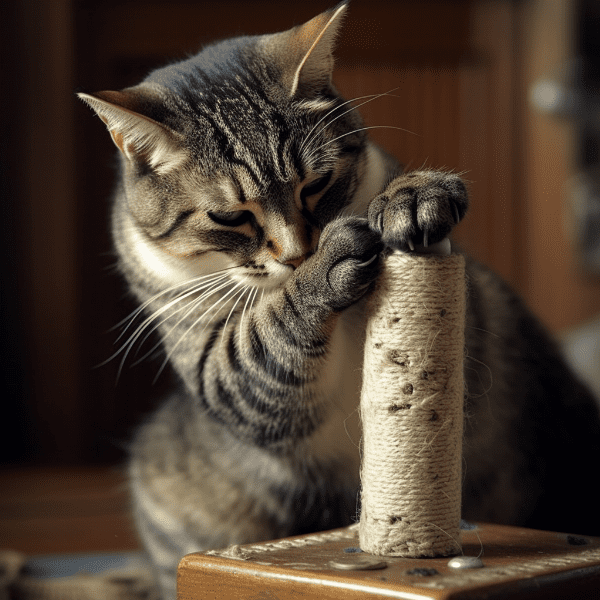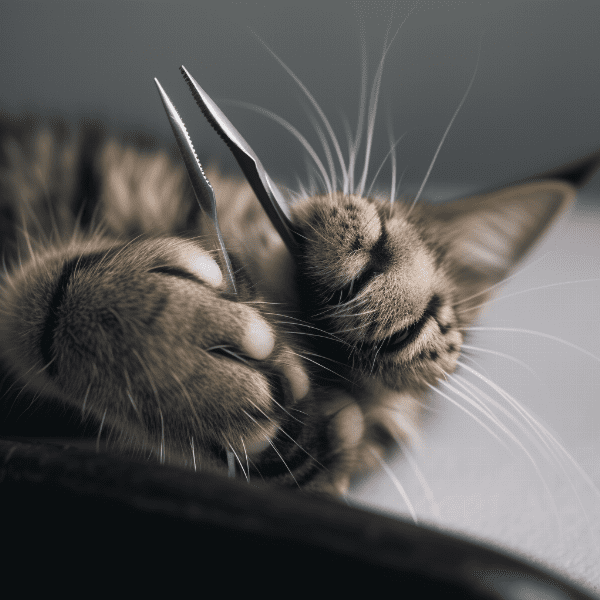Table of Contents
- Why Cat Nail Filing Is Important
- Tools You’ll Need for Filing Cat Nails
- How to Properly Hold Your Cat During Nail Filing
- Step-by-Step Guide for Filing Your Cat’s Nails
- Common Mistakes to Avoid When Filing Your Cat’s Nails
- How Often Should You File Your Cat’s Nails?
- Alternatives to Filing Your Cat’s Nails: Scratching Posts and Caps
Why Cat Nail Filing Is Important
Keeping your cat’s nails trimmed and filed is an important part of their overall health and well-being. In this section, we’ll explore some of the reasons why cat nail filing is so crucial.
Preventing Injury
Cats are natural climbers and scratchers, and their nails play an important role in these activities. However, if their nails are too long, they can become a hazard to both your cat and your home. Overgrown nails can easily get caught in fabrics or carpets, causing your cat to become stuck or injured. Additionally, if their nails are too long, they may be more prone to breaking or splitting, which can be painful for your cat.
Maintaining Good Hygiene
Cats are clean animals, and keeping their nails trimmed and filed can help them maintain their hygiene. Overgrown nails can trap dirt and bacteria, leading to infections and unpleasant odors. Filing your cat’s nails regularly can help prevent these issues and keep your cat feeling clean and comfortable.
Protecting Your Home
Cats love to scratch, and if their nails are too long, they may cause damage to your furniture and carpets. Regularly filing your cat’s nails can help prevent this damage and protect your home from scratches and tears.
Promoting Healthy Behaviors
Filing your cat’s nails is also an important part of promoting healthy behaviors. When your cat’s nails are too long, they may become more aggressive or agitated, and may even scratch or bite you or other animals. By keeping their nails trimmed, you can help your cat feel more comfortable and less stressed, leading to better behavior overall.
Conclusion
In summary, cat nail filing is an important part of keeping your cat healthy and happy. By preventing injury, maintaining good hygiene, protecting your home, and promoting healthy behaviors, regular nail filing can have a positive impact on both your cat and your household.

Tools You’ll Need for Filing Cat Nails
Filing your cat’s nails may seem like a daunting task, but with the right tools, it can be a quick and easy process. In this section, we’ll go over the essential tools you’ll need to get started.
Nail Clippers vs. Nail Files
Before you begin, you’ll need to decide whether you want to use nail clippers or nail files. Nail clippers are a quick and easy way to trim your cat’s nails, but they can sometimes leave sharp edges. Nail files, on the other hand, may take a bit longer to use, but they offer a more precise and smooth finish.
Choosing the Right File
If you decide to use a nail file, there are a few different options to choose from. Emery boards and metal files are two common choices, but you may also want to consider a specialized cat nail file, which is designed specifically for the shape and thickness of cat nails.
Other Essential Tools
In addition to nail clippers or files, there are a few other tools you’ll want to have on hand. These include styptic powder, which can help stop bleeding if you accidentally cut the quick (the pink area in the center of the nail that contains blood vessels and nerves), as well as treats to reward your cat for good behavior.
Conclusion
Having the right tools is essential for successful cat nail filing. Whether you choose to use nail clippers or a file, be sure to select the right type for your cat’s needs. Additionally, keeping styptic powder and treats on hand can help make the process smoother and more enjoyable for both you and your cat.
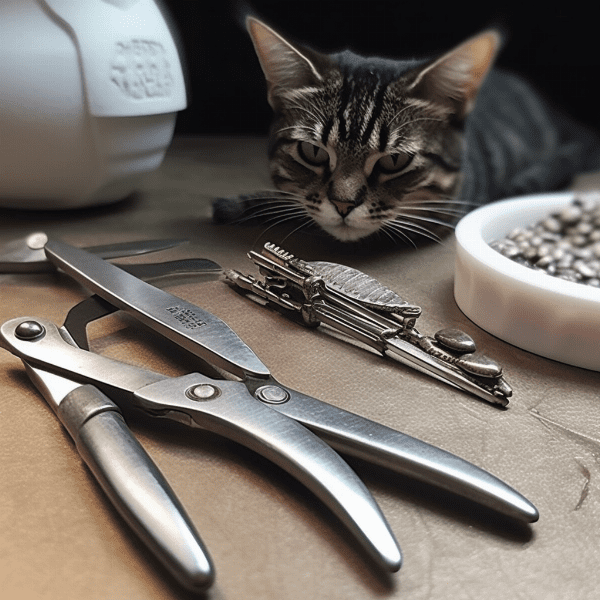
How to Properly Hold Your Cat During Nail Filing
Holding your cat properly during nail filing is key to ensuring that the process goes smoothly and safely. In this section, we’ll go over some tips for how to hold your cat correctly.
Start Slowly
Before you begin, it’s important to let your cat get comfortable with the idea of being held. Start by simply holding your cat in your lap and petting them, gradually working up to touching their paws and nails.
Use a Calming Voice
As you begin to hold your cat’s paws, speak to them in a calm and reassuring voice. This can help keep them calm and relaxed, making the process easier for both of you.
Applying Pressure
When holding your cat’s paw, be sure to apply gentle pressure to the top of their foot and their pads. This can help extend their nails and make them easier to file.
Conclusion
Holding your cat properly during nail filing is an important part of ensuring their safety and comfort. By starting slowly, using a calming voice, and positioning your cat correctly, you can make the process smoother and more enjoyable for both you and your feline friend. Remember to always handle your cat with care and to stop if either of you becomes stressed or uncomfortable.
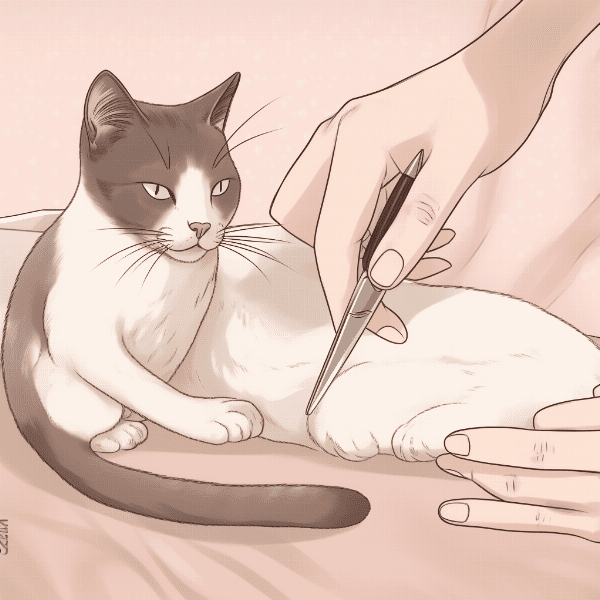
Step-by-Step Guide for Filing Your Cat’s Nails
Filing your cat’s nails may seem intimidating at first, but with a little practice and patience, it can become a routine part of your cat’s grooming routine. In this section, we’ll go over a step-by-step guide for filing your cat’s nails.
Step 1: Get Your Cat Comfortable
Before you begin filing your cat’s nails, make sure they are in a comfortable and calm state. This may mean holding them for a few minutes, giving them treats, or playing with them to help them relax.
Step 3: Examine the Nails
Take a close look at your cat’s nails to identify the quick, which is the pink area in the center of the nail that contains blood vessels and nerves. You’ll want to avoid cutting or filing this area, as it can be painful and may cause bleeding.
Step 4: File the Nails
Using a nail file or emery board, gently file the tips of your cat’s nails. Be sure to file in a single direction, starting at the top of the nail and moving downward. Avoid filing too much at once, as this can cause discomfort and may accidentally cut the quick.
Step 5: Reward Your Cat
After you’ve filed your cat’s nails, be sure to reward them with treats and praise. This can help make the process more enjoyable and can encourage good behavior in the future.
Conclusion
Filing your cat’s nails is an important part of their overall health and well-being. By following these step-by-step instructions and taking your time, you can help keep your cat’s nails healthy and comfortable. Remember to always handle your cat with care and to stop if either of you becomes stressed or uncomfortable.
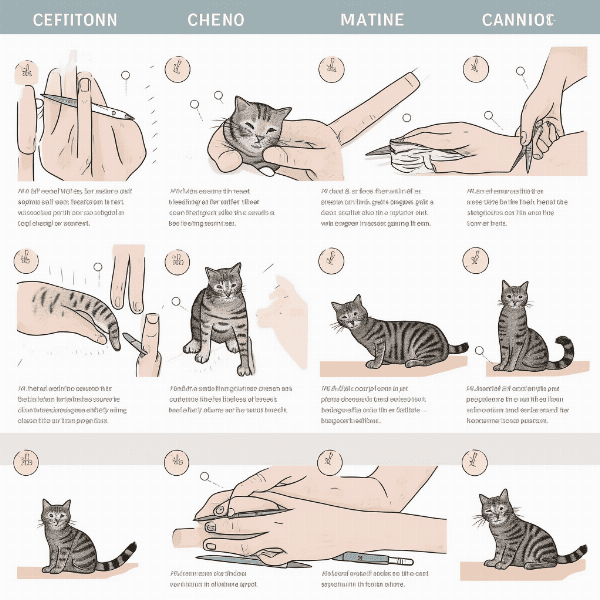
Common Mistakes to Avoid When Filing Your Cat’s Nails
Filing your cat’s nails can be a bit tricky, especially if you’re new to the process. In this section, we’ll go over some common mistakes to avoid when filing your cat’s nails.
Mistake 1: Cutting the Quick
One of the most common mistakes when Filing cat nails is cutting the quick, which is the pink area in the center of the nail that contains blood vessels and nerves. This can be painful for your cat and may cause bleeding. To avoid this, always file the nails in a single direction, starting at the top of the nail and moving downward, and take your time to avoid filing too much at once.
Mistake 2: Using the Wrong Tools
Using the wrong tools can also lead to mistakes when filing your cat’s nails. Make sure you’re using a nail file or clippers that are specifically designed for cats, as human nail clippers or files may not be appropriate for their small nails.
Mistake 3: Holding Your Cat Incorrectly
Holding your cat incorrectly during nail filing can cause discomfort and stress for both you and your cat. Be sure to position your cat on a stable surface, such as a table or countertop, and hold them gently but firmly with one hand while using your other hand to hold their paw steady.
Mistake 4: Filing Too Frequently
Filing your cat’s nails too frequently can lead to discomfort and even damage to their nails. Depending on your cat’s nail growth, you may need to file their nails every 1-2 weeks, but be sure to monitor their nails regularly to ensure they are not becoming overgrown or causing discomfort.
Conclusion
Filing your cat’s nails can be a bit tricky, but by avoiding common mistakes, you can help keep your cat’s nails healthy and comfortable. Remember to always use the right tools, hold your cat correctly, and file their nails in a single direction, taking your time to avoid cutting the quick. By following these tips, you can make nail filing a stress-free and beneficial part of your cat’s grooming routine.
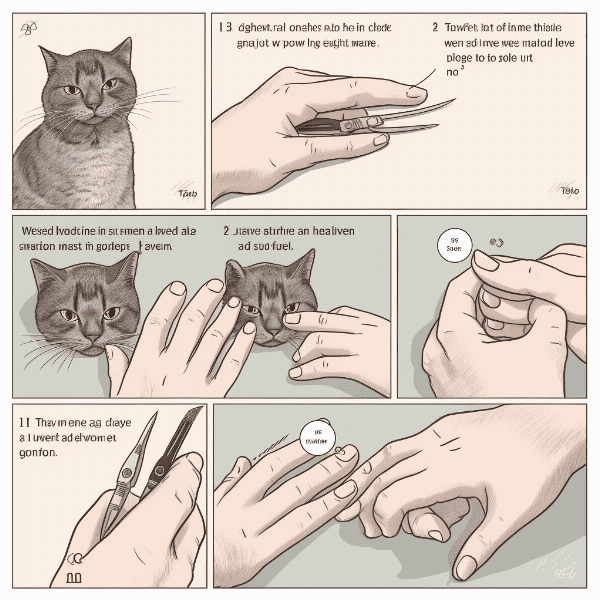
How Often Should You File Your Cat’s Nails?
Filing your cat’s nails is an important part of their grooming routine, but how often should you do it? In this section, we’ll explore some factors that can affect how often you should file your cat’s nails.
Age and Activity Level
Younger cats and cats that are very active may need their nails filed more frequently than older or less active cats. This is because their nails may grow more quickly or become dull or damaged more easily.
Indoor vs. Outdoor Cats
Indoor cats may need their nails filed less frequently than outdoor cats, as their nails may not experience as much wear and tear. However, it’s still important to monitor their nail growth and file them as needed.
Nail Length and Growth Rate
Ultimately, the length and growth rate of your cat’s nails will be the biggest determining factor in how often you should file them. As a general rule of thumb, you should aim to file your cat’s nails every 1-2 weeks, but this may vary depending on their individual needs.
Signs Your Cat’s Nails Need Filing
If you’re not sure whether your cat’s nails need filing, there are a few signs you can look out for. Overgrown or sharp nails, difficulty retracting their nails, or scratching furniture and carpets may indicate that it’s time for a nail filing.
Conclusion
Filing your cat’s nails is an important part of their overall health and well-being. While the frequency of nail filing may vary depending on your cat’s age, activity level, and environment, it’s important to monitor their nails regularly and file them as needed. By doing so, you can help prevent injury, maintain good hygiene, and promote healthy behaviors in your feline friend.

Alternatives to Filing Your Cat’s Nails: Scratching Posts and Caps
While filing your cat’s nails is an effective way to keep them healthy and comfortable, there are other options available as well. In this section, we’ll explore some alternatives to filing your cat’s nails, including scratching posts and nail caps.
Scratching Posts
Scratching posts are a great alternative to filing your cat’s nails, as they allow your cat to naturally wear down their nails while also providing a fun and stimulating activity. Scratching posts come in a variety of materials and styles, so you’re sure to find one that your cat loves.
Nail Caps
Nail caps are another alternative to filing your cat’s nails. These small, plastic caps fit over your cat’s nails and provide a blunt tip, preventing them from scratching or damaging furniture and carpets. Nail caps are easy to apply and can last for several weeks before needing to be replaced.
Combination Approach
Finally, you may want to consider a combination approach, using both scratching posts and nail caps in addition to filing your cat’s nails. This can provide your cat with a variety of options for keeping their nails healthy and comfortable.
Conclusion
Filing your cat’s nails is an important part of their grooming routine, but it’s not the only option available. Scratching posts and nail caps can provide effective alternatives to keep your cat’s nails healthy and prevent damage to your home. By exploring these options and finding what works best for your cat, you can help keep them happy and healthy for years to come.
